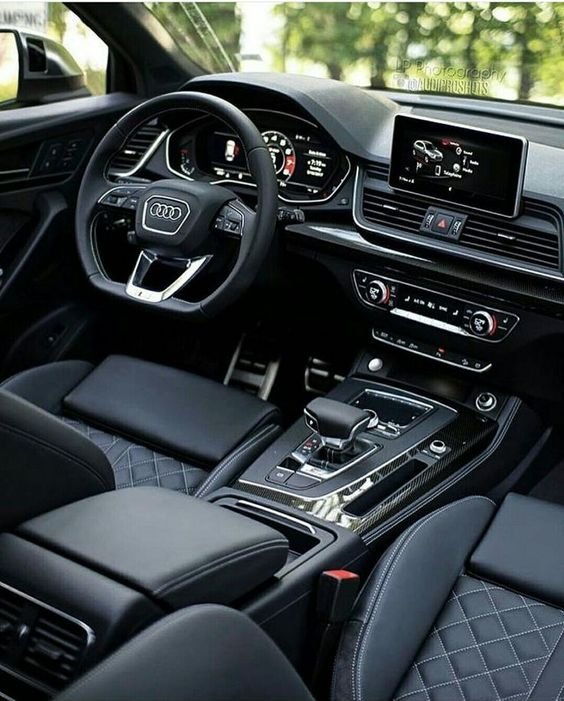
When shopping for a new vehicle, you may come across terms like “All-Wheel Drive (AWD)” and “Four-Wheel Drive (4WD)” quite frequently. While these terms may sound similar, they refer to two different types of drivetrain systems that affect how power is delivered to a vehicle’s wheels. Both AWD and 4WD systems provide better traction than a two-wheel-drive vehicle, but they serve different purposes and are designed for different driving conditions. Understanding the differences between AWD and 4WD can help you choose the right vehicle for your specific needs.
Understanding the Basics: What Are AWD and 4WD?
To fully grasp the differences, let’s first define what All-Wheel Drive (AWD) and Four-Wheel Drive (4WD) actually mean:
1. All-Wheel Drive (AWD)
All-Wheel Drive is a type of drivetrain that automatically distributes power to all four wheels of a vehicle, either continuously or as needed. AWD systems are typically designed for on-road driving and light off-road conditions. They are often found in cars, crossovers, and some SUVs. AWD is particularly useful in wet, icy, or snowy conditions, where traction can be compromised.
There are two main types of AWD systems:
- Full-Time AWD: Power is constantly delivered to all four wheels. This system does not require driver input to engage; it works automatically.
- Part-Time or Automatic AWD: This system primarily drives two wheels (usually the front) and automatically sends power to the other two wheels when it detects a loss of traction.
2. Four-Wheel Drive (4WD)
Four-Wheel Drive, also known as 4×4, is a drivetrain system that delivers power to all four wheels of a vehicle. Unlike AWD, 4WD is primarily designed for off-road driving and rugged terrain. It is most commonly found in trucks, SUVs, and other vehicles meant for heavy-duty use. 4WD systems often come with a high and low range, which allows the driver to manually select different driving modes based on the terrain.
There are two main types of 4WD systems:
- Part-Time 4WD: This system requires the driver to manually engage 4WD when needed, typically through a lever or switch. In normal driving conditions, the vehicle operates in two-wheel drive.
- Full-Time 4WD: In this system, the vehicle is always in 4WD mode, but the power distribution can be adjusted between the front and rear axles.
Key Differences Between AWD and 4WD
Now that we understand what AWD and 4WD are, let’s dive deeper into the key differences between these two systems:
1. Purpose and Use Case
- AWD: Designed for on-road use and light off-road conditions, AWD is ideal for everyday driving in diverse weather conditions, including rain, snow, and ice. It provides improved traction and stability on slippery roads, making it a popular choice for city dwellers and families. AWD systems automatically manage power distribution, requiring no input from the driver, which adds to the convenience.
- 4WD: Built for off-road driving and challenging terrain, 4WD is ideal for adventurous drivers who frequently encounter mud, rocks, sand, or snow-covered trails. It provides maximum traction and power, especially in low-traction conditions. 4WD systems usually require the driver to engage and control the system manually, allowing for greater control and customization based on the terrain.
2. System Operation and Power Distribution
- AWD: In an AWD system, power is distributed to all four wheels either continuously or as needed. The system relies on various sensors and a computer-controlled system to determine which wheels need more power. If the system detects that one wheel is slipping, it can redistribute power to the other wheels to maintain traction and control.
- 4WD: In a 4WD system, power is typically distributed evenly between the front and rear axles, providing maximum torque and traction. Some 4WD systems come with a transfer case that allows the driver to choose between different driving modes, such as 2H (two-wheel drive, high range), 4H (four-wheel drive, high range), and 4L (four-wheel drive, low range). This manual control gives drivers the ability to tailor the power distribution to suit specific off-road conditions.
3. Types of Vehicles Equipped with AWD and 4WD
- AWD: AWD is commonly found in a wide range of vehicles, including sedans, hatchbacks, crossovers, and some SUVs. It is often a standard feature in luxury and premium vehicles, as well as in family-oriented cars and those marketed for all-weather capability.
- 4WD: 4WD is primarily found in trucks, large SUVs, and off-road vehicles. These vehicles are designed to handle extreme conditions and rugged terrains, and 4WD is an essential feature for those who frequently venture off the beaten path or need to tow heavy loads.
4. Fuel Efficiency
- AWD: AWD systems generally consume more fuel than two-wheel-drive systems because they add weight and require additional components, such as differentials and driveshafts. However, they are typically more fuel-efficient than 4WD systems because they operate in a more automatic and selective manner, engaging all four wheels only when necessary.
- 4WD: 4WD systems are generally less fuel-efficient than AWD systems due to their weight and complexity. The full-time engagement of all four wheels, especially in off-road or low-traction conditions, requires more energy and results in higher fuel consumption. Part-time 4WD vehicles can be more fuel-efficient when operating in two-wheel-drive mode, but switching to 4WD significantly reduces fuel economy.
5. Driver Involvement and Control
- AWD: AWD systems are designed to work automatically, requiring minimal input from the driver. This is convenient for everyday driving, as the system seamlessly adjusts to changing road conditions without the need for manual intervention.
- 4WD: 4WD systems often require driver involvement to engage or disengage the system, particularly in part-time 4WD vehicles. Drivers need to decide when to switch between 2WD, 4H, and 4L modes based on the terrain and conditions. This level of control is advantageous for off-road enthusiasts but may not be ideal for those who prefer a hands-off approach.
6. Cost and Maintenance
- AWD: Vehicles equipped with AWD tend to be more expensive than their two-wheel-drive counterparts due to the added complexity and components. Additionally, AWD systems require regular maintenance, such as changing the differential fluids and inspecting the driveshafts. However, they typically incur lower maintenance costs than 4WD systems.
- 4WD: 4WD vehicles are generally more expensive than AWD vehicles because of the additional hardware, such as the transfer case, locking differentials, and reinforced axles. Maintenance costs are also higher, as 4WD systems are more complex and require regular servicing, especially if the vehicle is frequently used in off-road conditions.
7. Performance in Different Conditions
- AWD: AWD systems perform well on paved roads, in light off-road conditions, and in bad weather (like rain, snow, and ice). They provide good traction and stability, making them suitable for most driving situations encountered by the average driver. However, they may not offer the same level of capability as 4WD systems in extreme off-road conditions.
- 4WD: 4WD systems are designed to handle extreme conditions, such as deep mud, snow, sand, and rocky terrain. They provide maximum traction and power, making them ideal for off-road adventures, heavy towing, and challenging weather conditions. However, 4WD systems may not perform as efficiently as AWD systems on paved roads or in everyday driving scenarios.
Pros and Cons of AWD and 4WD
To further clarify the differences between AWD and 4WD, let’s summarize the pros and cons of each system:
All-Wheel Drive (AWD)
Pros:
- Provides better traction and stability on wet, icy, or snowy roads.
- Automatically adjusts to road conditions without driver input.
- Suitable for a wide range of vehicles, from sedans to crossovers.
- Typically more fuel-efficient than 4WD systems.
- Enhances overall safety and handling on slippery surfaces.
Cons:
- Less capable than 4WD in extreme off-road conditions.
- Adds weight and complexity to the vehicle, affecting fuel economy.
- Generally more expensive than two-wheel-drive vehicles.
- Not as durable as 4WD for off-road use.
Four-Wheel Drive (4WD)
Pros:
- Provides maximum traction and power in off-road and challenging conditions.
- Allows manual control for different driving modes (2H, 4H, 4L).
- Ideal for towing, heavy loads, and off-road adventures.
- Offers better performance in extreme weather and terrain.
Cons:
- Less fuel-efficient than AWD and two-wheel-drive systems.
- Requires driver input to engage or disengage the system.
- Higher maintenance costs due to added complexity.
- Typically found in heavier, less fuel-efficient vehicles.
Which is Right for You: AWD or 4WD?
Choosing between AWD and 4WD ultimately depends on your driving needs, preferences, and the conditions you frequently encounter. Here are some scenarios to help you decide:
When to Choose All-Wheel Drive (AWD):
- Daily Commuting: If you primarily drive on paved roads and face occasional rain, snow, or ice, AWD is a great choice. It offers improved traction and stability, making it safer for everyday driving.
- City Living: If you live in a city or suburban area with well-maintained roads, AWD provides the benefits of added grip without the need for manual intervention.
- Family Cars: AWD is ideal for family-oriented vehicles, such as crossovers and SUVs, where comfort, safety, and convenience are the priorities.
- Light Off-Road Use: If you occasionally venture off the beaten path but don’t require the extreme capabilities of 4WD, AWD can handle light off-road conditions like dirt roads and gravel paths.
When to Choose Four-Wheel Drive (4WD):
- Off-Road Adventures: If you frequently drive off-road, on rugged terrain, or in extreme weather conditions, 4WD is the way to go. It offers maximum traction, power, and control.
- Towing and Hauling: If you need to tow heavy loads, such as trailers or boats, 4WD provides the extra power and stability required for safe towing.
- Rural or Remote Living: If you live in a rural or remote area with unpaved or poorly maintained roads, 4WD can handle the rough conditions better than AWD.
- Snow and Ice: While both AWD and 4WD perform well in snowy conditions, 4WD offers an extra level of capability for deep snow, ice, and slippery surfaces.
Conclusion
Both All-Wheel Drive (AWD) and Four-Wheel Drive (4WD) have their unique advantages and are suited to different driving conditions and needs. AWD provides convenience, safety, and enhanced traction for everyday driving, especially in diverse weather conditions. On the other hand, 4WD offers maximum control, power, and off-road capability, making it ideal for challenging terrains and extreme conditions.
When choosing between AWD and 4WD, consider your driving habits, the environments you frequently encounter, and the type of vehicle that best suits your lifestyle. Understanding the key differences between these two drivetrain systems will help you make an informed decision and ensure you select the right vehicle for your needs.







